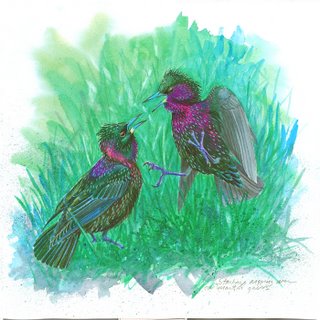Two weekends ago I was lucky enough to have great looks at three great horned owls in two different locations. Two involved flying birds, but one was a close-up, unobstructed view of an awake, perched owl. Owl sightings always leave an impression with me because such sightings are so unusual during the day and because owls' faces are so compelling.
 Great Horned Owl / Photo by Carla Stanley (USFWS)
Great Horned Owl / Photo by Carla Stanley (USFWS)Unlike other birds, owls have forward-facing eyes and stereoscopic vision, which presumably gives them some advantage in low light conditions. That adaptation leaves them with very human-looking faces. As a result, owls may be the most easily anthropomorphized of bird families. They are also among the most mysterious of birds because of their nocturnal habits. Thus all sorts of magical traits - for good or ill - are associated with them.
In reality, there is very little magic involved in a great horned owl's habits. They are among the most adaptable of hunters, and will take game from the very small (mice , voles, and the like) to animals as large as raccoons and domestic cats. Depending on the location, great horned owls may take mammals, birds, or reptiles of many different species. They are habitat generalists, and can survive in suburban areas, though they prefer open woodland and meadows.
Winter is a good time to look for owls, whether great horned or other species. Fewer leaves on the trees means that there are fewer places for owls to hide, thus narrowing the search area to conifers and tangles of vines. Local owls start to set up their breeding territories as early as January. Great horned owls, in particular, are more vocal at this time of year than later in the spring or summer, and some pairs may already be on nest. An additional benefit is that many northern species will winter in the mid-latitudes, so if you want to see a long-eared or northern saw-whet owl, this is the time of year to look.
 Great Horned Owl Chicks in Nest / Photo by USFWS
Great Horned Owl Chicks in Nest / Photo by USFWSDuring the day, check for owls in stands of conifers, especially spruce and fir. Regular roosts will be marked by cakes of whitewash. Look for trees with obvious whitewash and check the upper branches carefully for owls. Since great horned owls use nests built and abandoned by other species, it is worth checking old hawk and squirrel nests for a nesting owl. Night owling can be aided by playing taped calls, though that may not be advisable (or legal) in all areas. Be sure to check local regulations and consider your own safety before looking for owls at night.
If you want to look for owls yourself, some of the following may be helpful:
If you are lucky enough to see an owl or find a nest site, take precautions to avoid disturbing the bird. Keep a respectful distance and avoid visiting the same spot repeatedly. Do not publish a nest location on internet sites or email lists. These guidelines should hold for all owl species, except perhaps for extreme rarities or for species that can be observed from a distance, like short-eared and snowy owls.
When I wrote my last post in this series
in October, I did not think it would take six weeks for me to write another one. I do plan to keep this series going, and I have a few more installments planned for the coming weeks.
Crossposted at Blue Ridge Gazette.





































